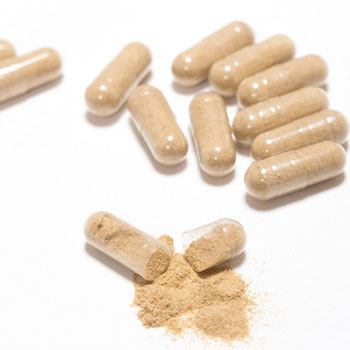You might have seen one or both of these ingredient names on the label of a dietary supplement product, most likely for pre-workout, weight loss, brain health, or other performance enhancement. What are they? Are they the same thing? Are they safe? This article looks at rauwolscine and Rauwolfia—and how they appear on labels—so you can be aware of what you might be taking.
Rauwolfia and rauwolscine are not prohibited for use by Military Service Members, but products with these ingredients could impact your readiness.
What is Rauwolfia?
Rauwolfia is a group of plants that contain more than 30 chemical compounds, including the stimulants rauwolscine and yohimbine, as well as reserpine, which can be used as a drug. When you see Rauwolfia listed on a product label, it might contain any combination of the 30 chemicals that occur in the plant.
What is rauwolscine?
Rauwolscine is one of the many chemicals occurring in Rauwolfia plants. It can be extracted from these plants, but it also can be created in a laboratory. On dietary supplement labels, rauwolscine might be listed instead as alpha-yohimbine or α-yohimbine. Rauwolscine (despite its synonym “alpha yohimbine”) isn’t the same as yohimbine, but the two are very similar, and both are stimulants.
Are Rauwolfia and rauwolscine “safe” for Military Service Members to use?
Neither Rauwolfia nor rauwolscine is prohibited for use by Military Service Members, and neither should cause a positive result on a military drug test. However, products listing either or both ingredients are possibly unsafe, so you should be aware of what you are taking.
Animal studies suggest that Rauwolfia (or Rauvolfia) can affect a developing fetus and should not be used by children or pregant or nursing women. Human studies on Rauwolfia are old and somewhat conflicting, possibly due to the various chemical compounds (or combinations of chemicals) present in the plant. In fact, reserpine is rarely used as a prescription drug due to unwanted side effects, and yohimbine has been banned in many countries outside the U.S. because of its potential for serious health effects. In addition, the combination of unknown chemicals present in Rauwolfia might reduce blood pressure, resulting in dizziness, tiredness, irregular heartbeat, and breathlessness. Depression or worsening depression has also been associated with Rauwolfia.
No clinical studies on the safety or efficacy of rauwolscine have been reported, so we cannot be certain how safe or unsafe it is as a stimulant ingredient by itself.
Many dietary supplement products with rauwolscine or Rauwolfia—primarily weight-loss and pre-workout supplements—have been found to contain additional (sometimes hidden) stimulants, and their cumulative effects can be dangerous. This can lead to more serious adverse events than single ingredients themselves. For more information, please read the OPSS article about stimulants.
How can I tell which is in my supplement?
Look at the Supplement Facts label where the ingredients are listed. Depending on the wording, you might get an idea of what is in your supplement: Rauwolfia, rauwolscine, or both. Here are some examples of what you might see on a label and what each might mean.
- If you see “Rauwolfia vomitoria root,” it could contain any combination of the many chemical compounds in Rauwolfia (some of which are stimulants).
- If you see “extract”—such as “Rauwolfia serpentina extract”—there is no way to know which “extracted” chemical compounds are present (some of which might be stimulants).
- If you see the word “rauwolscine” with the plant name Rauwolfia, such as “Rauwolscine (Rauwolfia vomitoria root bark extract)” or “Rauwolfia canescens root extract (alpha yohimbine),” it presumably doesn’t have any of the other chemicals from the plant, so the ingredient’s effects are those associated only with the stimulant rauwolscine.
- A similar term found on labels is “Rauwolfia serpentina extract (leaf) (std. for 90% rauwolscine)” or the similar wording. This suggests that 10% of the other plant chemicals are present, such as yohimbine. This is important because yohimbine has been associated with some serious health risks.
- Sometimes, just “rauwolscine” or “rauwolscine (alpha-yohimbine)” or “alpha yohimbine” is listed. In this case, presumably, none of the other Rauwolfia-based substances are present. It’s also possible to create this chemical substance in a laboratory, so you can’t tell if the ingredient is natural or synthetic.
So, not knowing the exact nature of an ingredient listed on a label makes it almost impossible to judge what kind of effects it might produce. The best way to know what’s in your supplement is to look for evidence of third-party certification or verification.
Updated 03 November 2020

